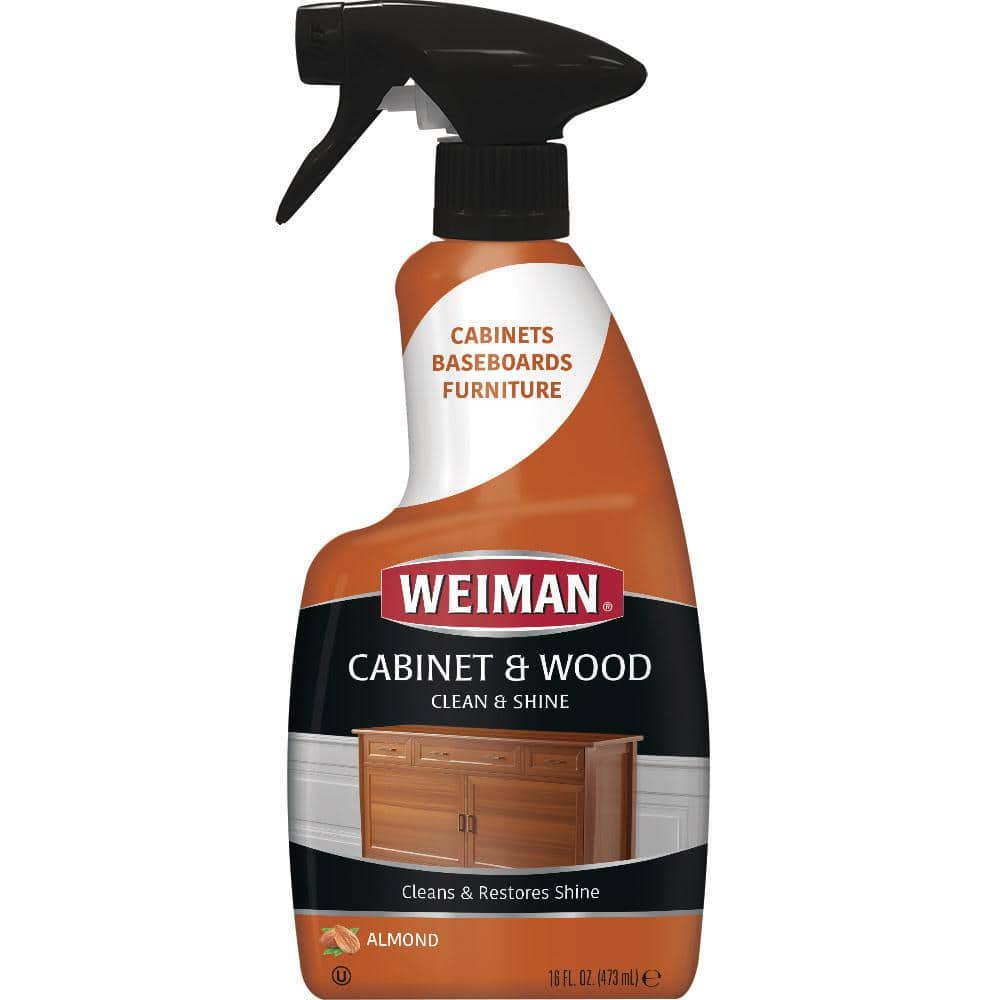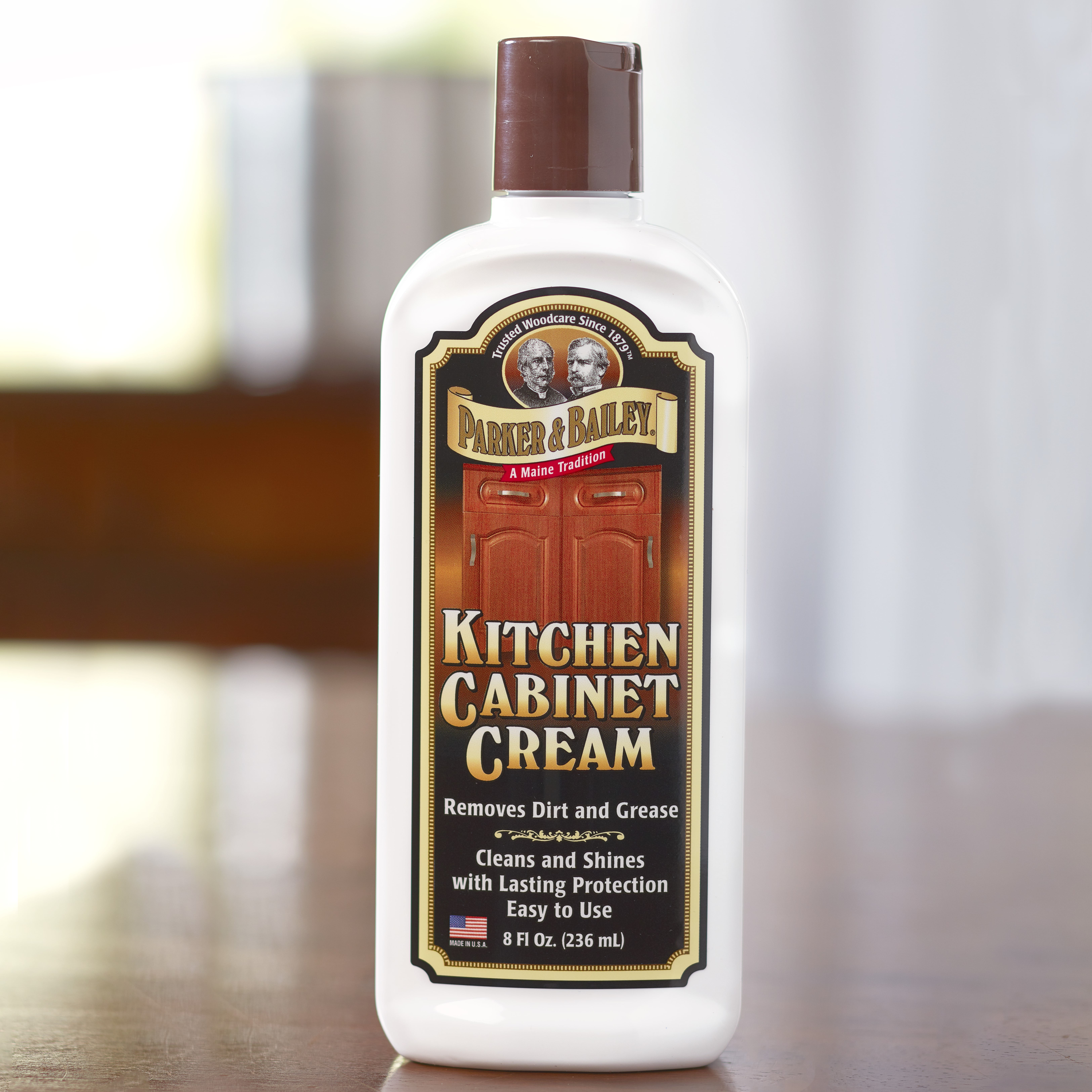Understanding Degreasers for Wood Cabinets: Degreaser Cleaner For Wood Cabinets

Degreasers are essential cleaning products for removing grease, oil, and grime from wood cabinets. Choosing the right degreaser is crucial to ensure effective cleaning without damaging the cabinet finish. Understanding the different types of degreasers and their pros and cons is essential for making an informed decision.
Types of Degreasers
Different types of degreasers are available, each with its strengths and weaknesses.
- Solvent-Based Degreasers: These degreasers are highly effective in removing heavy grease and grime. They work by dissolving the grease and lifting it away from the surface. Examples include mineral spirits, kerosene, and paint thinner.
- Alkaline Degreasers: These degreasers are typically used for cleaning heavily soiled surfaces and are often found in commercial settings. They work by breaking down grease and oil molecules. These degreasers are often formulated with strong chemicals and may require protective gear during use.
- Citrus-Based Degreasers: These degreasers are made from citrus fruit extracts and are a more natural and eco-friendly option. They are effective in removing light grease and grime and are often safer for use around children and pets.
- Enzyme-Based Degreasers: These degreasers use enzymes to break down grease and oil molecules. They are typically used for cleaning heavily soiled surfaces and are often found in commercial settings. These degreasers are often formulated with strong chemicals and may require protective gear during use.
Pros and Cons of Degreasers
- Solvent-Based Degreasers:
- Pros: Highly effective in removing heavy grease and grime, readily available, and relatively inexpensive.
- Cons: Strong odor, flammable, potentially harmful to the environment, can damage some cabinet finishes, and may require ventilation during use.
- Alkaline Degreasers:
- Pros: Highly effective in removing heavy grease and grime, often available in concentrated forms for cost-effectiveness.
- Cons: Strong odor, potentially harmful to the environment, can damage some cabinet finishes, may require protective gear during use, and can be corrosive to certain materials.
- Citrus-Based Degreasers:
- Pros: Safer for use around children and pets, biodegradable, and pleasant scent.
- Cons: Less effective in removing heavy grease and grime, may require multiple applications, and can be more expensive than other options.
- Enzyme-Based Degreasers:
- Pros: Effective in removing heavy grease and grime, environmentally friendly, and can be used on various surfaces.
- Cons: Can be more expensive than other options, may require a longer contact time to work effectively, and can be less effective in cold temperatures.
Choosing the Right Degreaser
Several factors should be considered when choosing a degreaser for wood cabinets:
- Type of Cabinet Finish: Some degreasers can damage certain cabinet finishes. Always test the degreaser on an inconspicuous area before applying it to the entire cabinet.
- Severity of Grease or Grime: For heavy grease and grime, a stronger degreaser may be required. For light grease and grime, a milder degreaser may be sufficient.
- Safety Concerns: If you have children or pets, you may want to choose a degreaser that is safe for use around them.
- Environmental Impact: If you are concerned about the environment, you may want to choose a biodegradable degreaser.
Effective Degreasing Techniques for Wood Cabinets

Degreasing wood cabinets effectively requires a systematic approach to ensure a thorough clean without damaging the wood finish. This involves preparing the cabinets, applying the degreaser, scrubbing and rinsing, and drying them properly.
Step-by-Step Process for Degreasing Wood Cabinets
This step-by-step guide will walk you through the process of degreasing wood cabinets safely and effectively.
- Prepare the Cabinets: Before applying the degreaser, it’s essential to prepare the cabinets for a thorough clean. Begin by removing all items from the cabinets, including dishes, utensils, and any other contents. Then, dust the cabinets with a soft cloth or brush to remove loose dirt and debris. This step prevents the dirt from mixing with the degreaser, potentially creating a muddy residue.
- Apply the Degreaser: Apply the degreaser to the cabinets using a soft cloth or sponge. Work in small sections, ensuring the entire surface is covered. For stubborn grease or grime, allow the degreaser to sit for a few minutes before scrubbing.
- Scrub and Rinse: Use a soft-bristled brush or a non-abrasive sponge to scrub the cabinets gently. Avoid using harsh scrubbers or abrasive materials, as these can damage the wood finish. After scrubbing, rinse the cabinets thoroughly with clean water. It’s crucial to remove all traces of the degreaser to prevent any residue buildup.
- Dry the Cabinets: After rinsing, dry the cabinets with a clean, soft cloth. Ensure the cabinets are completely dry to prevent water spots or mildew. For hard-to-reach areas, use a hairdryer on a low setting to speed up the drying process.
Tips for Avoiding Damage and Ensuring a Thorough Clean
Here are some additional tips to ensure a successful and safe degreasing process:
- Test in an Unconspicuous Area: Before applying the degreaser to the entire cabinet, test it in an inconspicuous area. This helps ensure the degreaser doesn’t damage the finish.
- Work in a Well-Ventilated Area: Degreasers often contain strong chemicals. It’s essential to work in a well-ventilated area to avoid inhaling fumes.
- Wear Protective Gear: When handling degreasers, always wear protective gear such as gloves and eye protection. This minimizes the risk of skin or eye irritation.
- Follow Manufacturer Instructions: Always follow the manufacturer’s instructions for using the degreaser. This includes dilution ratios, application times, and safety precautions.
- Avoid Over-Saturating: While ensuring the cabinets are thoroughly covered, avoid over-saturating them with the degreaser. Excess degreaser can damage the wood finish or leave a residue.
- Consider Professional Cleaning: If you’re unsure about using degreasers or if the cabinets are heavily soiled, consider hiring a professional cleaning service.
Degreasing Techniques and Precautions, Degreaser cleaner for wood cabinets
| Cleaning Task | Method | Tools | Precautions |
|---|---|---|---|
| Removing Grease and Grime | Apply degreaser to the affected area, let it sit for a few minutes, then scrub with a soft-bristled brush or non-abrasive sponge. Rinse thoroughly with clean water. | Degreaser, soft-bristled brush or non-abrasive sponge, clean water | Test the degreaser in an inconspicuous area first. Wear gloves and eye protection. Work in a well-ventilated area. |
| Cleaning Stubborn Stains | Apply a paste made from baking soda and water to the stain. Let it sit for a few minutes, then scrub with a soft-bristled brush. Rinse thoroughly with clean water. | Baking soda, water, soft-bristled brush, clean water | Test the baking soda paste in an inconspicuous area first. Avoid using harsh scrubbers. |
| Polishing the Wood Finish | After degreasing and drying, apply a wood polish or sealant to protect the wood and enhance its shine. | Wood polish or sealant, soft cloth | Follow the manufacturer’s instructions for using the polish or sealant. |
Maintaining Clean Wood Cabinets

Regular cleaning and maintenance are crucial for preserving the beauty and longevity of your wood cabinets. Neglecting these tasks can lead to the accumulation of grease, dirt, and grime, which can damage the wood’s finish and compromise its aesthetic appeal.
Preventing Grease Buildup and Other Problems
Grease buildup is a common problem for wood cabinets, particularly in kitchens. To prevent this, it’s essential to adopt proactive measures.
- Wipe spills immediately: Spills, especially greasy ones, should be cleaned up promptly to avoid staining and damage to the wood’s finish. Use a damp cloth or sponge to absorb the spill and then dry the area thoroughly.
- Regularly clean cabinet doors and drawers: Clean your cabinets at least once a month, or more frequently if you cook often. Use a mild cleaning solution and a soft cloth to wipe down the surfaces.
- Use a grease-cutting cleaner: For heavier grease buildup, use a degreaser specifically designed for wood cabinets. Apply the cleaner according to the manufacturer’s instructions and rinse thoroughly.
- Avoid harsh chemicals: Harsh chemicals, such as bleach or ammonia, can damage the wood’s finish. Use gentle cleaners that are specifically formulated for wood surfaces.
- Keep cabinets well-ventilated: Proper ventilation helps prevent moisture buildup, which can lead to mold and mildew growth. Make sure your kitchen is well-ventilated, especially when cooking.
Tips for Keeping Wood Cabinets Looking Their Best
Maintaining the pristine appearance of your wood cabinets requires a few key practices.
- Use coasters and placemats: These simple items can help protect your cabinets from scratches and heat damage caused by hot dishes or mugs.
- Keep sharp objects away from cabinets: Knives, forks, and other sharp objects can scratch the wood’s finish. Keep them stored safely away from your cabinets.
- Avoid placing heavy items on cabinets: Overloading cabinets can cause them to sag or warp. Distribute weight evenly and avoid placing heavy items on top.
- Polish regularly: Regular polishing helps protect the wood’s finish and enhance its shine. Use a wood polish specifically formulated for your cabinet’s finish.
- Apply a sealant: Applying a sealant to your cabinets can help protect them from water damage and stains. This is especially important for cabinets in kitchens and bathrooms.
Degreaser cleaner for wood cabinets – Yo, so you’re thinking about giving your kitchen a makeover with some seriously slick cabinets? Maybe you’re rocking that whole painted cabinets with natural wood doors vibe, which is totally trending right now. Check out this design fusion for some inspiration.
But before you start painting, remember to give those cabinets a good degreasing. You don’t want any greasy residue messing up your fresh paint job, right?
Okay, so you’re all about that degreaser for your wood cabinets, right? But maybe you’re also thinking about a little makeover for your bedroom, and a false ceiling for small bedroom could be the ultimate upgrade. That’s some serious style, but remember, once you’ve got those cabinets gleaming, you’ll want to keep them that way! So, keep that degreaser handy, and maybe consider adding some sparkle to your bedroom too!
